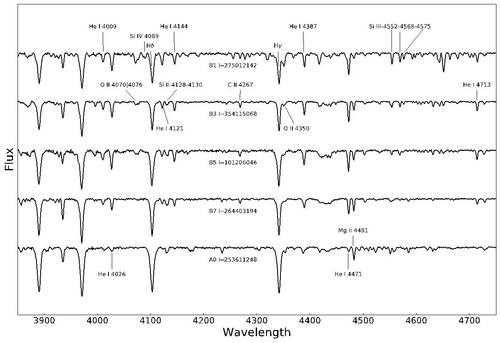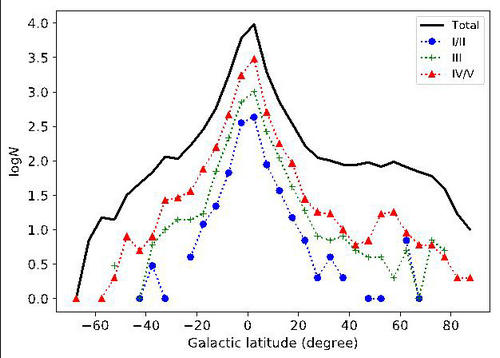A research team has constructed the largest O/B-type star catalog with the spectral information, including 22,901 spectra of 16,032 O/B-type stars identified from the Large Sky Area Multi-Object Fiber Spectroscopic Telescope (LAMOST) DR5 data.
The research team from Hebei Normal University, National Astronomical Observatories of Chinese Academy of Sciences (NAOC), and Yunnan University used the line indices method to identify these stars, and refined the spectral characteristics of each subtype of O/B-type stars.
“O/B-type stars are early-type stars with spectral types O and B. They contain massive (M>8 M⊙) stars and special sub-objects such as hot sub-dwarf, white dwarf, and post-AGB stars. Among them, massive stars are rare due to their short life span, but they are crucial to the evolution of the universe,” said Prof. Wenyuan Cui,study co-author from Hebei Normal University.
“The massive stars can lead to various types of supernovae (SN), e.g., SN Ib, SN Ic, and SN IIP. They may also result in a rich diversity of gamma-ray burst (GRB) phenomena, including long GRBs and soft GRBs. Through powerful stellar winds and SN explosions, massive stars can strongly influence the chemical and dynamical evolution of galaxies. They may also dominate the integrated ultraviolet radiation in high-redshift young galaxies,” said Prof. Chao Liu, study co-author from NAOC.
Prof. Wenyuan Cui said “The currently known OB-type stars are mainly concentrated in the solar neighborhood, and most of them lack spectral information.”
“The new catalog is highly accurate by a multi-person independent human eye test, and its completeness is better than 89% for the stars with spectral types earlier than B7, and larger than 57% for B8–B9 stars.” Prof. Wenyuan Cui said.
“We find that the spectral and luminosity classes of the O/B-type stars located in the Galactic latitude larger than 20° are substantially different with those located in the latitude smaller than 20°, which may either be due to the observational selection effect or may hint a different origin of the high Galactic latitude OB stars,” said Prof. Wenyuan Cui.
“Our OB stars shows a clear ripple pattern in the radial velocity (VR) map combining Gaia DR2 data.” This work is finished by Xinlun Cheng, Prof. Shude Mao of Tsinghua University, and Prof. Chao Liu from NAOC, and Prof. Wenyuan Cui from Hebei Normal University, which has been published in The Astrophysical Journal Letters (ApJL, 2019, 872, L1).

Figure 1. Spectral sequence of B-type main sequence stars identified from LAMOST data.

Figure 2. Spectral sequence of B-type super-giants identified from LAMOST data.

Figure 3. Distributions of O/B-type stars in Galactic latitude.

Address: 20A Datun Road, Chaoyang District, Beijing, China code: 100012
Tel: 010-64888708 E-mail: naoc@nao.cas.cn

